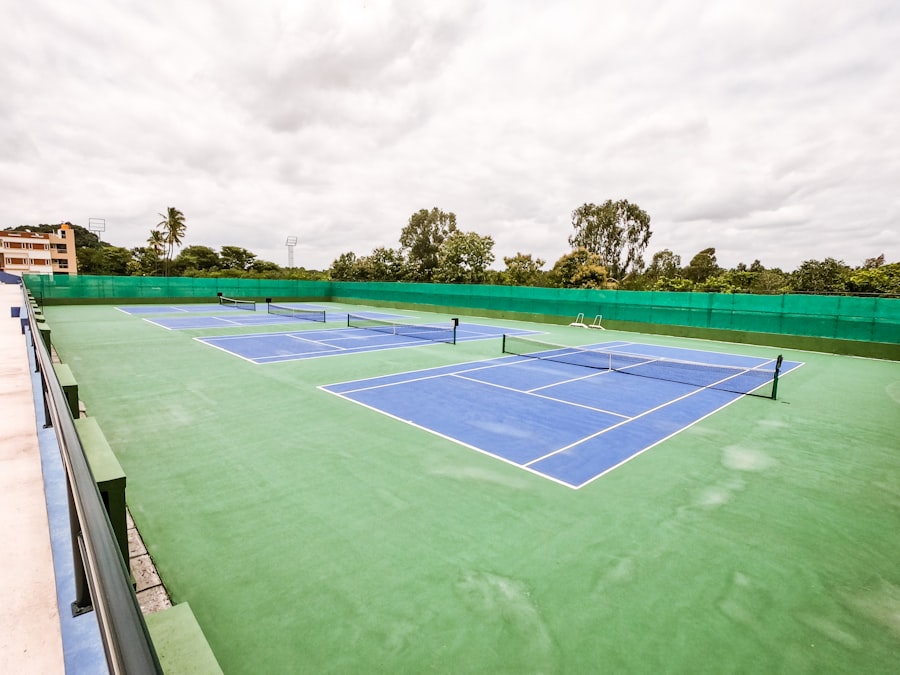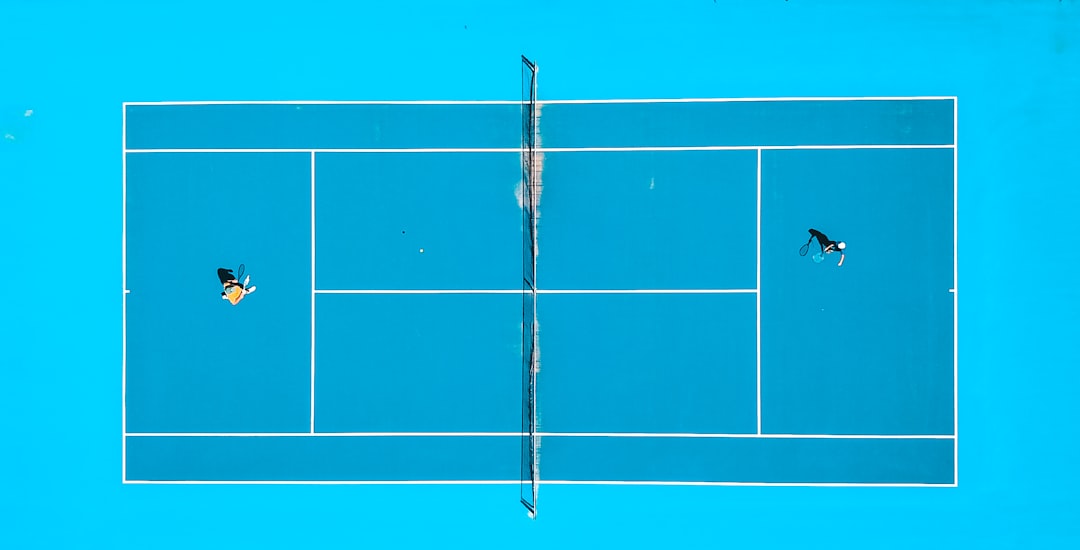The Grand Slam tennis championships, comprising the Australian Open, French Open, Wimbledon, and the US Open, represent the pinnacle of achievement in the sport. The origins of these prestigious tournaments can be traced back to the late 19th century. The first of these events, Wimbledon, was established in 1877, making it the oldest tennis tournament in the world.
Initially, it was a men’s singles event, but it quickly expanded to include women’s singles and doubles competitions. The French Open followed in 1891, originally known as the Championnat de France, and was open only to French players until 1925 when it became an international event. The Australian Open and the US Open joined the ranks of Grand Slam tournaments later in the 20th century.
The Australian Open began in 1905 but faced numerous challenges, including World War I and II, which affected its scheduling and participation. It wasn’t until the 1960s that the tournament gained significant international recognition. The US Open, which started as the U.S.
National Championships in 1881, evolved over the years, transitioning from grass to clay and finally to hard courts in 1978. The establishment of these four tournaments as Grand Slam events solidified their status as the most coveted titles in tennis, drawing the best players from around the globe.
Key Takeaways
- Grand Slam tennis championships have a rich history dating back to the late 19th century, with the first major tournament being the Wimbledon Championships in 1877.
- Memorable moments in Grand Slam history include Serena Williams’ “Serena Slam” in 2002-2003 and Roger Federer’s record-breaking 20 Grand Slam titles.
- The greatest players to ever win a Grand Slam title include legends such as Serena Williams, Roger Federer, Rafael Nadal, and Margaret Court.
- Grand Slam victories have a significant impact on a player’s legacy, often solidifying their status as one of the all-time greats in the sport.
- Different surfaces, such as grass, clay, and hard courts, present unique challenges for players in Grand Slam tournaments, requiring adaptability and skill.
- Mental toughness is crucial in winning a Grand Slam title, as players must navigate high-pressure situations and maintain focus throughout the tournament.
- Coaching and training play a vital role in Grand Slam success, with many players relying on a strong support team to help them prepare for and navigate the challenges of major tournaments.
- The future of Grand Slam tennis championships is bright, with continued innovation in technology, player development, and fan engagement shaping the evolution of the sport.
The Most Memorable Moments in Grand Slam History
Throughout the history of Grand Slam tennis, there have been countless moments that have etched themselves into the annals of sports history. One such moment occurred during the 1980 Wimbledon final between Björn Borg and John McEnroe. This match is often regarded as one of the greatest in tennis history, particularly due to its dramatic fifth set.
Borg, known for his stoic demeanor, faced off against McEnroe, whose fiery temperament was a stark contrast. The match reached a crescendo during a tiebreaker in the fourth set, where McEnroe famously shouted “You cannot be serious!” after a disputed call. Borg ultimately triumphed, winning his fifth consecutive Wimbledon title, but the match remains a defining moment for both players and for tennis itself.
Another unforgettable moment came during the 2008 Wimbledon final between Roger Federer and Rafael Nadal. This match is often hailed as one of the greatest ever played, not just for its high level of play but also for its emotional intensity. After nearly five hours of grueling competition, Nadal emerged victorious, marking his first Wimbledon title and ending Federer’s five-year reign at the tournament.
The match was played under increasingly darkening skies, with both players displaying extraordinary skill and resilience. Nadal’s victory not only solidified his status as one of the game’s greats but also marked a significant shift in the rivalry between him and Federer, setting the stage for years of epic encounters.
The Greatest Players to Ever Win a Grand Slam Title

When discussing the greatest players in Grand Slam history, a few names consistently rise to the top of any list. Roger Federer stands out as one of the most elegant and successful players ever to grace the court. With a record 20 Grand Slam titles to his name, Federer’s style of play is characterized by his fluid movement and precise shot-making.
His victories span all four Grand Slam tournaments, showcasing his versatility on different surfaces. Federer’s rivalry with Nadal and later with Novak Djokovic has defined an era in tennis, with their matches often being celebrated for their high stakes and exceptional quality. Rafael Nadal is another titan of the sport whose achievements are nothing short of remarkable.
Known as “The King of Clay,” Nadal has dominated the French Open with an unprecedented 14 titles as of 2023. His relentless work ethic and fighting spirit have made him a fan favorite and a formidable opponent on any surface. Nadal’s ability to adapt his game has allowed him to win on grass and hard courts as well, bringing his total Grand Slam count to 22 titles.
His matches against Federer and Djokovic have produced some of the most thrilling moments in tennis history, further cementing his legacy as one of the all-time greats.
The Impact of Grand Slam Victories on a Player’s Legacy
| Player | Grand Slam Titles | Legacy Impact |
|---|---|---|
| Roger Federer | 20 | Elevated to one of the greatest of all time |
| Rafael Nadal | 20 | Considered one of the greatest clay court players |
| Novak Djokovic | 20 | Enhanced reputation as one of the best in the modern era |
| Serena Williams | 23 | Regarded as one of the greatest female players in history |
Winning a Grand Slam title is often seen as the ultimate achievement for any tennis player, significantly impacting their legacy within the sport. For many athletes, these victories serve as a defining moment in their careers, elevating their status from mere competitors to legends. For instance, when Serena Williams won her first Grand Slam title at the US Open in 1999 at just 17 years old, it marked the beginning of an era dominated by her powerful presence on the court.
Over her career, Williams amassed 23 Grand Slam singles titles, making her one of the most successful players in history and an icon for future generations. The legacy of a player is not solely defined by their number of titles but also by their influence on the game itself. For example, Billie Jean King’s victory at Wimbledon in 1972 was not just about winning; it was a pivotal moment for gender equality in sports.
King’s advocacy for women’s rights and her role in establishing equal prize money at major tournaments have left an indelible mark on tennis and beyond. Her legacy is intertwined with her achievements on the court but extends far into social change, demonstrating how Grand Slam victories can shape a player’s impact on society.
The Different Surfaces and Challenges of Grand Slam Tournaments
Each Grand Slam tournament is played on a distinct surface that presents unique challenges for players. The Australian Open is played on hard courts that are known for their speed and bounce, favoring aggressive baseline players who can hit powerful shots with precision. In contrast, the French Open is played on clay courts, which slow down the ball and produce a higher bounce.
This surface requires players to possess exceptional stamina and strategic shot placement to succeed. The transition from hard courts to clay can be particularly challenging for players who are accustomed to faster surfaces. Wimbledon stands out as the only Grand Slam played on grass courts, which are known for their unpredictable bounces and fast playing conditions.
Grass requires players to adapt their games significantly; serve-and-volley tactics are more effective here than on other surfaces. Finally, the US Open is also played on hard courts but features a different type of surface that can be slower than that used at the Australian Open. This variation adds another layer of complexity for players who must adjust their strategies accordingly throughout the tournament season.
The Importance of Mental Toughness in Winning a Grand Slam Title

Mental toughness is often cited as one of the most critical attributes for success in high-stakes environments like Grand Slam tournaments. The pressure to perform at such prestigious events can be overwhelming; players must navigate not only their opponents but also their own psychological barriers. For instance, Novak Djokovic has frequently spoken about how mental resilience has been key to his success on tour.
His ability to maintain focus during crucial moments has allowed him to come back from seemingly insurmountable deficits in matches. The mental aspect of tennis becomes even more pronounced during long matches that stretch into five sets or last several hours. Players must manage fatigue while maintaining concentration and composure under pressure.
A prime example is Andy Murray’s victory at Wimbledon in 2013 after years of near misses; he faced immense pressure from both his own expectations and those of British fans who had long awaited a homegrown champion. Murray’s ability to stay mentally strong throughout that match against Novak Djokovic ultimately led him to victory and solidified his place among tennis greats.
The Role of Coaching and Training in Grand Slam Success
Coaching plays an indispensable role in preparing players for the rigors of Grand Slam tournaments. A good coach not only helps refine a player’s technical skills but also provides strategic insights tailored to specific opponents and surfaces. For example, Patrick Mouratoglou has been instrumental in Serena Williams’ career resurgence after her return from maternity leave.
His coaching has focused on enhancing her already formidable serve while also addressing her mental approach to matches. Training regimens have evolved significantly over time as well; modern players often incorporate sports science into their preparation routines. This includes everything from nutrition plans to recovery protocols designed to optimize performance during grueling tournaments.
Players like Rafael Nadal have been known to employ specialized training techniques that focus on building endurance and strength specific to clay court play, allowing him to dominate at Roland Garros year after year.
The Future of Grand Slam Tennis Championships
As we look toward the future of Grand Slam tennis championships, several trends are emerging that could shape how these tournaments are conducted and experienced by fans worldwide. One significant development is the increasing use of technology in officiating matches; systems like Hawk-Eye have revolutionized line calling and reduced human error during critical points in matches. This technology not only enhances fairness but also adds an element of excitement for spectators who can see real-time replays.
Moreover, there is growing interest in expanding accessibility to these prestigious events through digital platforms and social media engagement. As younger generations consume sports differently than previous ones—favoring highlights over full matches—tournaments are adapting by providing more content online and engaging fans through interactive experiences. This shift could lead to increased viewership and participation in tennis globally, ensuring that Grand Slam events remain relevant and continue to inspire future generations of players and fans alike.
In conclusion, while each section highlights different aspects of Grand Slam tennis championships—from their rich history to their evolving future—the common thread remains: these tournaments are not just competitions; they are cultural phenomena that shape athletes’ careers and influence millions around the world.
FAQs
What are the different types of tennis championships?
There are several types of tennis championships, including Grand Slam tournaments (such as the Australian Open, French Open, Wimbledon, and US Open), ATP Tour events, WTA Tour events, and the Davis Cup for men and the Fed Cup for women.
How are tennis championships organized?
Tennis championships are organized by various governing bodies, such as the International Tennis Federation (ITF), the Association of Tennis Professionals (ATP) for men’s events, and the Women’s Tennis Association (WTA) for women’s events. These organizations set the rules and regulations for the tournaments and oversee their organization.
What is the significance of Grand Slam tournaments in tennis championships?
Grand Slam tournaments are considered the most prestigious events in tennis, as they offer the highest prize money and ranking points. Winning a Grand Slam title is a major achievement for any tennis player and is often seen as a career-defining moment.
How are tennis championships won?
Tennis championships are won by players or teams who advance through the tournament rounds and ultimately win the final match. The format and rules for winning vary depending on the specific championship and the type of event (singles, doubles, etc.).
What is the prize money for tennis championships?
The prize money for tennis championships varies depending on the specific tournament and the level of the event. Grand Slam tournaments typically offer the highest prize money, with millions of dollars in total prize funds. Other tournaments may offer smaller prize pools, but the exact amounts can vary from year to year.
